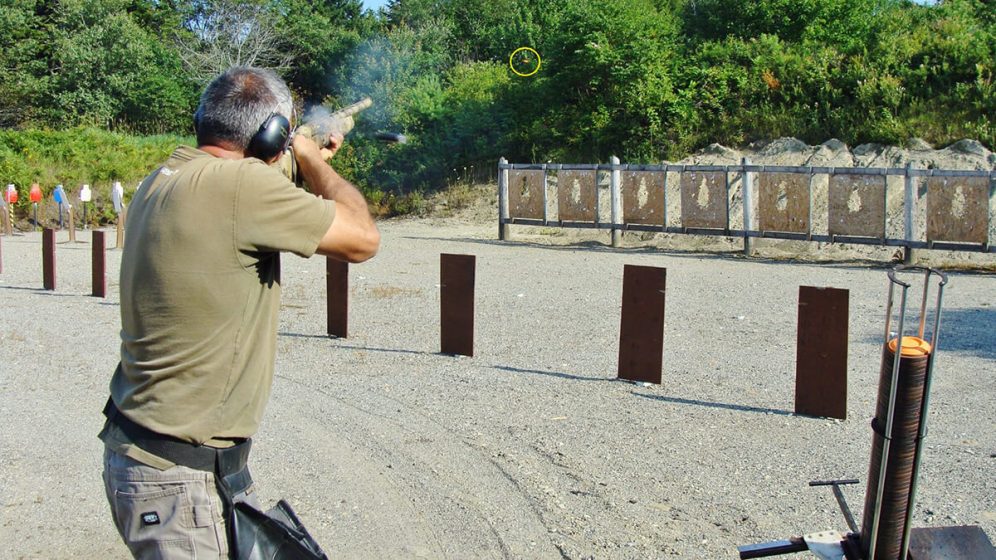
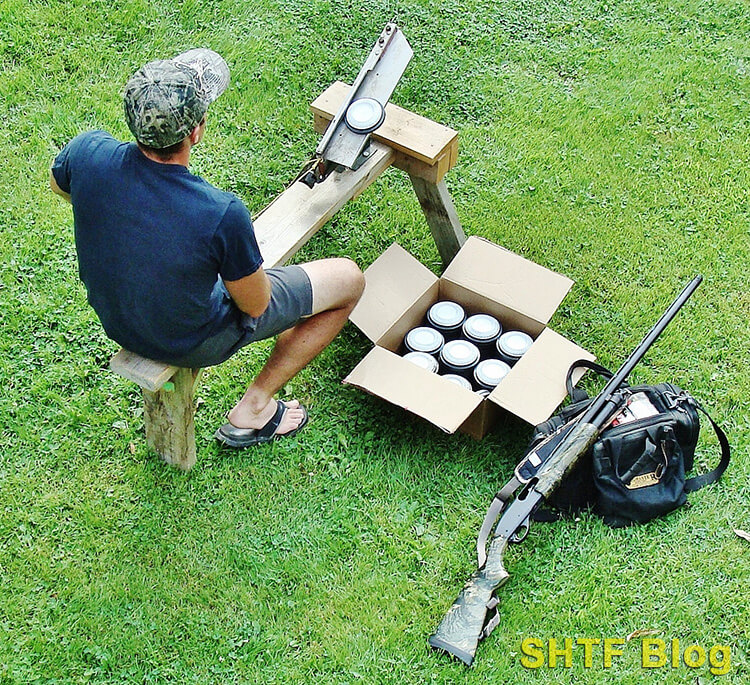 All that’s needed for an enjoyable afternoon: A jury-rigged Trius Trap, a case of clay pigeons, some shells, a standard shotgun, and an open mind. The gun is a 12 Gauge Remington Design 870 with a 28 ″ bird barrel fitted with an improved-cylinder choke tube. Knowing how to shoot clay pigeons is not as made complex as it might first seem. A bit of guideline will go a long way (and conserve a lot of squandered money). Appropriate direction from the outset will also help avoid bad practices that are challenging to remedy later.
All that’s needed for an enjoyable afternoon: A jury-rigged Trius Trap, a case of clay pigeons, some shells, a standard shotgun, and an open mind. The gun is a 12 Gauge Remington Design 870 with a 28 ″ bird barrel fitted with an improved-cylinder choke tube. Knowing how to shoot clay pigeons is not as made complex as it might first seem. A bit of guideline will go a long way (and conserve a lot of squandered money). Appropriate direction from the outset will also help avoid bad practices that are challenging to remedy later.
Backstory
Dawn had actually hardly broken when a mallard streaked into view– a low quartering incomer, headed toward the decoys. I swung through and fired, splashing the drake in the marsh. As the canine paddled out for a wise obtain, for some inexplicable factor, the front sight of my shotgun captured my eye.
Turned out the red fiber-optic aspect had left, leaving just its steel keeping ring. At that point, my hunting partner broke the news: It had been opted for at least a week. So much for powers of observation.
The problem was I required a brand-new plastic element. Fortunately was, we ‘d chalked up three efficient hunts and, if anything, my shooting had actually enhanced. The reason? When it concerns flying targets, intentional intending is the formula for a miss.
Constant hits require sharp focus on the object in flight! However I’m a much better aimer than a pointer. With that intense red bead no longer noticeable, the ducks, rather than my barrel, received attention. And after that, sorta like tossing a football or a dart, wing-shooting ended up being a lot more instinctive.
4 Key Actions in How to Shoot Clay Pigeons
Effective clay pigeon shooting is going to need some supplies, there’s no chance around that. In addition to lots of clay pigeons and ammo, you’re going to need a thrower. There are a few different throwers discussed in this article. We have a listing of bulk ammo sites that you can look for ammo. Shoot often adequate and you might find reloading shotgun shells deserves it.
Other stores we like for shooting materials include:
Even if you’re not a hunter, blasting clay birds out of the sky can be a hoot. Naturally, this assumes you can strike ’em. On the other side, there’s nothing quite as worsening as burning through an entire box of shells with little bit more to reveal than 25 empties– specifically with an audience.
Well-intentioned spectators might use recommendations connected to the necessary lead, which could be valid– or not. You might have the perfect allowance for a 30-yard crossing target, but still shoot under it due to a flinch– or for other reasons associated with gun fit, kind, and vision.
1– Point the Gun
By their own admission, numerous skilled handgun and rifle shooters tend to have a hard time on airborne targets– something I can relate to. We’re programmed to thoroughly align a set of sights on a target– at which point we’re aiming. Therefore, the inclination is to view the muzzle of the shotgun, once again, the recipe for a miss out on.
Back to that worsening 30-yard crossing target, a 4.3″ claybird spotting by at, say, 45 miles per hour. There’s some psychology here: For whatever factor, deliberate muzzle positioning with the target lets loose an inner demon with a measuring tape. While consuming over the essential forward allowance (lead), the gun tends to stop while the target keeps going.
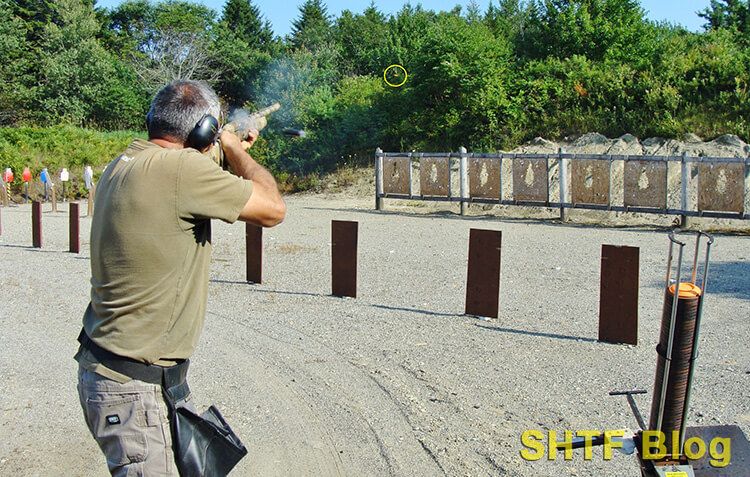 The moment of truth: A quick quartering target(circled)– a great prospect for the swing-through method(
The moment of truth: A quick quartering target(circled)– a great prospect for the swing-through method(
see below). Keep in mind the shooter’s shell bag, hearing, and eye security. Chances are the shot will miss– however here’s an unusual phenomenon: A hasty follow-up shot might produce a hit.
Why? No time at all delegated believe. You simply “kept your eye on the ball.”
That’s what it requires to dust a clay pigeon with a shotgun. If you’re focusing on the target, you’re pointing. Most of us have actually been pointing at things of interest because before we might ever describe what they were. Take that practice and use it to shooting clay targets.
Even today, as you point at an object, your finger pointer will be little bit more than a peripheral blur– an excellent way to envision the shotgun barrel. You understand it, but your full attention is riveted to the target.
2– Preparation the Shot
Experienced clay target shooters engage their targets with a plan, usually based on three distinct stages: pickup point, insertion point, and break point.
| Pickup Point: | The area where the target can first be easily seen and evaluated.Insertion Point: The spot where the muzzle is inserted for tracking |
to the break point.Break Point: The ideal area for the shot, with some allowance for follow through. As a rule of thumb, the insertion-point is usually someplace in-between
; and, as the stock contacts the shooter’s face, complete concentration shifts to the target– particularly at the break-point. Done correctly, it’s called”difficult focus.”3– Focus Hard The objective ought to be a razor-sharp clay bird– so clear every minute detail can be seen while focusing on the leading edge. If you can accomplish this, congratulations! You’ve nailed”difficult focus.” Believe it or not, that elusive 30-yard clay target will appear larger
, and it might even seem to slow down. It’s likewise why I’m not a fan of high-visibility sights(which work for some wingshooters). 4– Represent Lead Consider what it takes to toss a football to a running receiver.
The information are practically impossible to articulate, however somehow, most of us can intuitively compute the lead with an unexpected degree of accuracy. For this reason, when starting a brand-new shooter, I try to prevent the demons related to specific methods– simply to see what takes place. No crossers though; rather, a shallow-angled incoming target with time to make the shot.
For security’s sake, this presentation requires a remote-controlled trap. The alternative is an outbound target thrown to minimize worries over lead
. But ultimately, allowances will become essential. And here’s where things get intriguing– most shotgunners, whether they realize it or not, utilize one (or more)of the following methods, finest imagined through the tiresome 30-yard crosser. Engagement of a crossing target utilizing the “sustained lead” method. If the weapon is stopped throughout the shot, the result will be a miss out on. Hence, follow-through necessary! At 30 lawns, depending on the load, a 45-mph crosser could need six or more feet of forward allowance. Swing Through: The gun is inserted behind the target. The trigger is pressed as the muzzle sweeps
| through its leading edge, producing integrated lead– and follow-through. Retreat: The weapon is inserted to track with the target to its break point. Then, as the muzzle is accelerated ahead, the trigger is pressed– another version that generates built-in lead and follow-through. Sustained Lead: The muzzle is placed ahead of the target as the stock contacts the shoulder and face. While maintaining the required lead, the trigger is pressed– and the swing continues. Follow-through is necessary. Stop the weapon and | you’ll miss. Likewise, many experienced shotgunners use different methods for differing presentations. Really, once the basics are understood, a big part of the game becomes psychological– the self-confidence to |
trust our shooting. If you can manage it, an expert lesson is well worth its expense. For a window into the art of wingshooting, Optimal Shotgun Efficiency preserves an excellent website with a substantial quantity of valuable details. Wingshooting: The Finer Points An example of an efficient prepared position by means of a champion-class skeet shooter. The muzzles are already indexed to the target’s path. A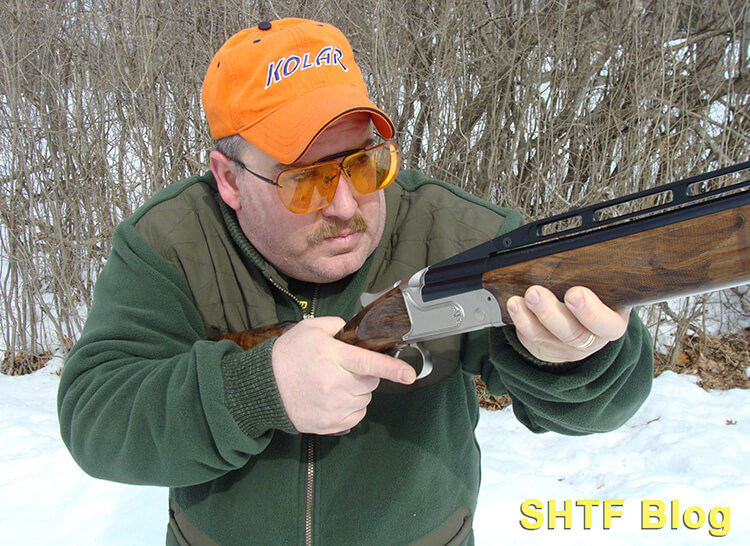 short and smooth weapon mount is all it’ll take to track and break the claybird. The needed concentration is obvious. Due to the fact that a target/wingshooting shotgun is developed to be pointed, the sighting system is fundamental; some kind of front bead(perhaps
short and smooth weapon mount is all it’ll take to track and break the claybird. The needed concentration is obvious. Due to the fact that a target/wingshooting shotgun is developed to be pointed, the sighting system is fundamental; some kind of front bead(perhaps
with an extra tiny mid-bead more for mounting practice). But it still needs a rear sight to provide centered shot patterns– specifically, the shooter’s eye! And, similar to the rear sight of a handgun or rifle, an adjustment
will present an absolutely no change. Thus, the first issue is eye supremacy. Determine Eye Dominance The dominant eye needs to be centered behind the barrel to prevent an extreme windage mistake. It’s a real problem for a right-handed shooter with a dominant
left eye(or vice versa), but one that is surmountable. If uncertain which eye is in charge, go visit the Dominant Eye Test. Make Sure Correct Gun Fit The weapon needs to shoot where you’re looking. The comb (top edge)of the stock serves to manage the shooter’s head for pattern positioning. Length is another important measurement. Appropriate weapon fit is one of the best ways to lower shotgun recoil. As a rule of thumb, shoot thelongest stock you can easily mount without contortions. Nevertheless, shorter-stocked girls & youth weapons are sold due to the fact that adult-sized stocks are typically too long. A 12 Ga. Beretta AL-391 autoloader with some small stock tweaks. The stock’s length-of-pull(LOP )has actually been shortened
simply a
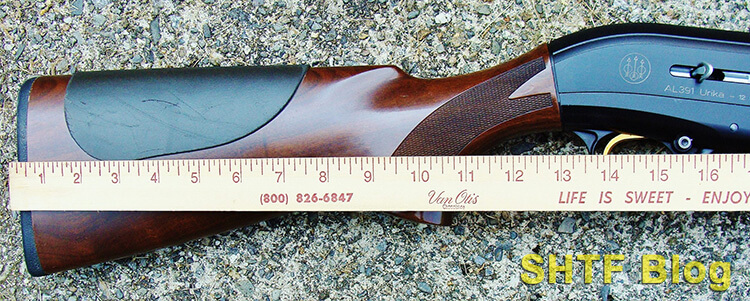 bit to 14-inches. The comb’s adhesive pad was contributed to move patterns a bit higher. As a bonus, it likewise transmits less recoil to a cheekbone. Correct Position Think it or not, plenty of targets are missed with our feet. An example: As a right-hander, you presume the same bladed left-foot forward position utilized by
bit to 14-inches. The comb’s adhesive pad was contributed to move patterns a bit higher. As a bonus, it likewise transmits less recoil to a cheekbone. Correct Position Think it or not, plenty of targets are missed with our feet. An example: As a right-hander, you presume the same bladed left-foot forward position utilized by
numerous rifle shooters. The dreaded 30-yard crosser appears on a right-to left course but, just as you’re prepared to break the shot, you run out of swing. The gun stops and the bird keeps going. Possibly the best wingshooter who ever lived was Earl de Grey, Lord Ripon, a driven gamebird master. To better address targets, he preferred a more frontal position similar to the most recent squared-up tactical positions– something Lord Ripon had actually figuredout before the 20th century. Or, attempt pointing your leading foot to the anticipated break point. Weapon Mount During the weapon install, bring the weapon smoothly to your head– not your head to the weapon. The bright side: You can practice this in your home. While you’re at it attempt tracking wall/ceiling line points while swinging the weapon in both instructions. Done correctly, the swing and break are just a fluid continuation of the gun install. Use Good Targets Irregular throws make it tough to figure out the fundamentals. Remote-controlled traps resolve this concern, and can likewise cover all angles, but a manually-cocked $100 version will work, too. Sale Trius Original Trap This trap can be gotten used to throw beyond guideline distance Large adjustment knobs make it completely adjustable Can be held in place by foot or tire installed Choose the Right Guns & Loads The extremely versatile  12 gauge will cover almost all
12 gauge will cover almost all
- clay bird venues with a 2 3/4-inch, 1 1/8-ounce, target load. But a softer-shooting 1-oz. load of # 7 1/2 s or # 8s will cover most inside
- 40 yards with much less possibility of developing a flinch. Better yet
, begin with a 20
gauge and 7/8-oz. target loads. Use a gas-operated autoloader and recoil will be even softer. Likewise, within factor, longer barrels of 26 -28 “will supply smoother swings. Popular claybird loads: The SUPER-HANDICAP is a warm regulation Trap load. The LIGHT and XTRA-LIGHT shells are softer-shooting Skeet loads that can cover practically whatever. The LOW RECOIL load is a fantastic choice for newbies– although it may not cycle an autoloader.
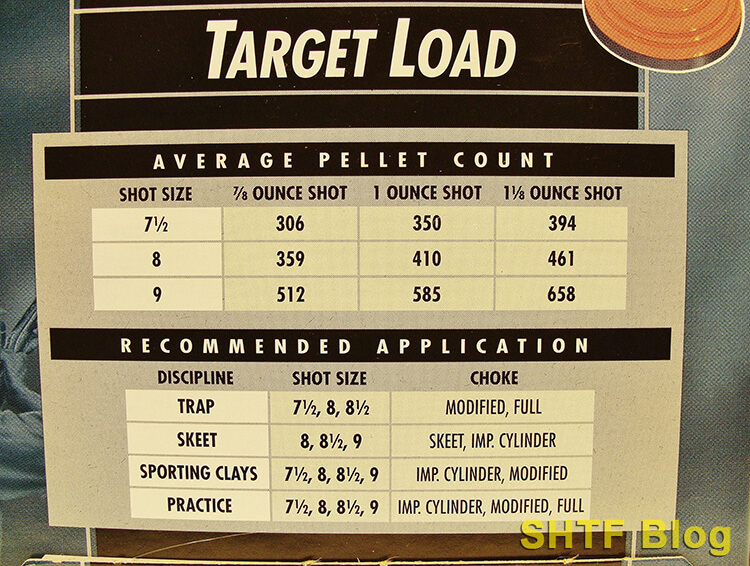 Useful info on the back of a shotgun shell box, compliments of Federal Ammo. With the exception of guideline Trap, # 8 shot and an improved-cylinder choke will
Useful info on the back of a shotgun shell box, compliments of Federal Ammo. With the exception of guideline Trap, # 8 shot and an improved-cylinder choke will cover almost every claybird shoot. Choke It Skeet was founded to imitate upland bird hunting. The targets vary from shallow-angle outgoers and incomers to 90-degree crossers. Considering that many are engaged inside 21 lawns, minimal-constriction chokes (skeet– I/C) are preferred.
Trap targets are outgoers contended longer ranges, so more choke is required (typically customized– complete). Still, that infernal 30-yard crosser might be braked with an improved-cylinder (I/C) choke and a 1-ounce load of # 8s.
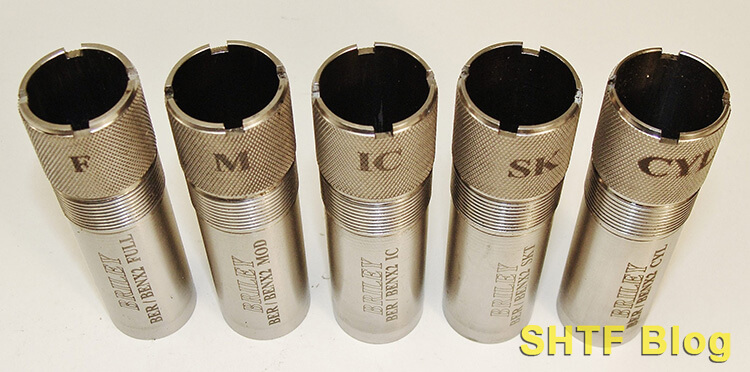 A selection of interchangeable choke tubes, shown here in their descending order of constrictions. Trap shooters lean toward Complete and Customized chokes. Skeet shooters gain from the more open Cylinder and Skeet tightness. The I.C. tube in the middle of this lineup, right where it belongs.
A selection of interchangeable choke tubes, shown here in their descending order of constrictions. Trap shooters lean toward Complete and Customized chokes. Skeet shooters gain from the more open Cylinder and Skeet tightness. The I.C. tube in the middle of this lineup, right where it belongs. Waterfowl and Upland Birds
Clay targets are an excellent way to improve wingshooting skills– especially if you shoot from a dismounted ready position. Due to the fact that the same abilities use, there are opportunities for tailored practice. We have actually taken pleasure in excellent pre-season tune-ups throughout claybird flurries, starting while flat on our backs in design blinds.
Two stacked milk cages can mimic a blind or boat seat. A couple pals with a low-cost hand trap are all you need. Get innovative, keep at it, and the outcome will be a much heavier game bag.
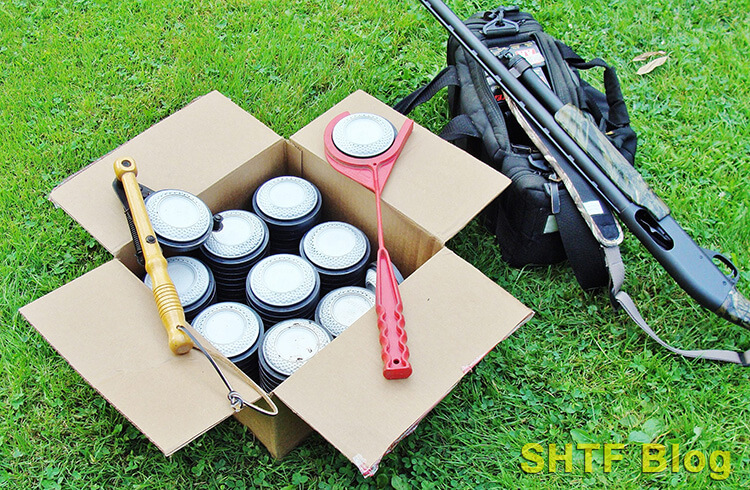 As easy as it gets: If you can discover an older hand-trap like the wooden-handled Remington, you’ll stay in business with a little practice. The plastic variation can pitch ’em, too– as soon as the right technique is mastered. A group of creative shooters could have all sorts of enjoyable– maybe using both throwers at once.
As easy as it gets: If you can discover an older hand-trap like the wooden-handled Remington, you’ll stay in business with a little practice. The plastic variation can pitch ’em, too– as soon as the right technique is mastered. A group of creative shooters could have all sorts of enjoyable– maybe using both throwers at once. Protective Training
With the able support of a knowledgeable cadre, we weaved some clay birds into our company’s hectic shotgun program. The goal was to increase the tempo of reliable shots while constructing confidence on moving targets– a perfect location for clay pigeons supplying instant feedback. Of the couple hundred individuals, only a little portion had any clay bird experience.
Nevertheless, the non-regulation claybird fest ended up being a big hit– in more ways than one. By the list below year, our battery-powered Auto-Chucker launcher had actually developed to a pair of makers, capable of throwing single or double targets via one push-button control.
By the third-year self-confidence had skyrocketed to the point where the whole thing ended up being a full-blown competitors. However the bigger win for all was shotgun competency, which had actually visibly improved across the board.
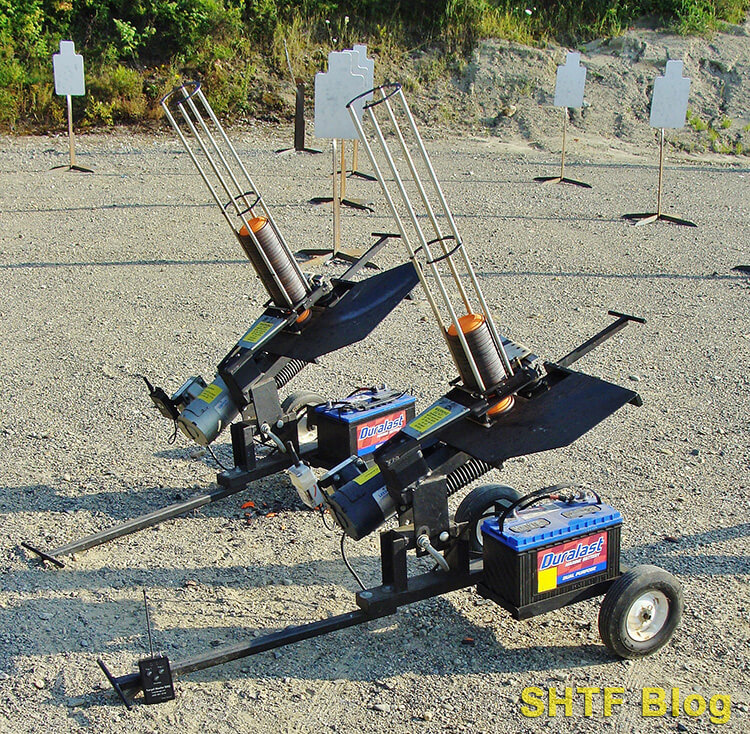
A pair of 12-volt “Auto Chucker”remote-controlled traps. The deep-cycle batteries will throw more than a thousand claybirds off a single charge. The remote control(lower left)will operate each launcher independently, or all at once to toss real sets. The more affordable alternative is Champion’s remote-controlled “WheelyBird”.
A primary issue was the pointing vs intending conundrum. Our soldiers were currently shotgun trained so their Model 870 Police pumps weren’t strangers, but these guns were geared up with rifle sights. We handled it during a pre-fire class, summed up as follows:
- Concentrate on the target!Keep your cheek on the stock.Press the trigger. With a set of sights in
- the picture( literally), the inclination is to use ’em. The repair? Simply look through the sights and keep your eye on the target!
A”ghost-ring”sight in action. using a strong and generally effective weapon install. Constant head positioning on the stock is the crucial to constant hits! A strong install like this also takes the bite out of recoil. When It’s Okay to Objective a Shotgun Because shotgun slugs are single projectiles, precision improves through aimed shots. Turkey hunters remain in the same
boat due to tight chokes that produce thick patterns. Red dot sights and even scopes are a reliable option to a discouraging miss brought on by a tight pattern and an elevated-head lapse. For protective functions the above” gaze through the sights”method is quick and effective with buckshot loads. The exact same method works well with a ghost-ring system, too. Parting Shot Wingshooting is part science, but it’s also part art. Truthfully, it’s typically not nearly as tough as we make it– if we can just leave our own method.
If you can work
through the essentials, you’ll get the technology to harvest upland birds and waterfowl, all perfectly edible protein sources, as are turkeys and little video game. Start with a basic shotgun (like the Remington Model 870 12 gauge pump in the image), include an additional rifle-sighted slug barrel, and you’ll likewise own a deer weapon and powerful defensive firearm– perhaps the ultimate Prepper package. Bottom line: When it pertains to true adaptability, a shotgun is tough to beat. To learn more about its capabilities, here’s the link to Shotguns: A Comprehensive Guide.

